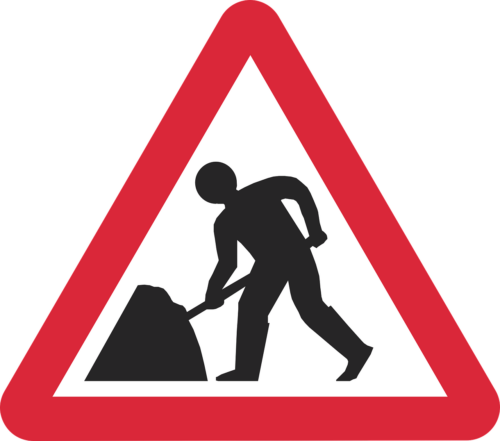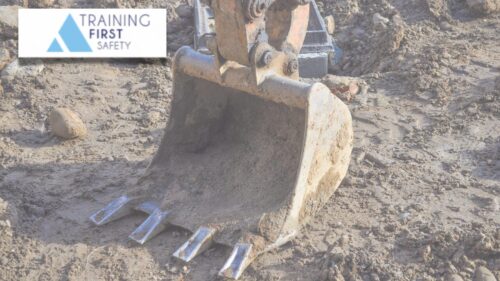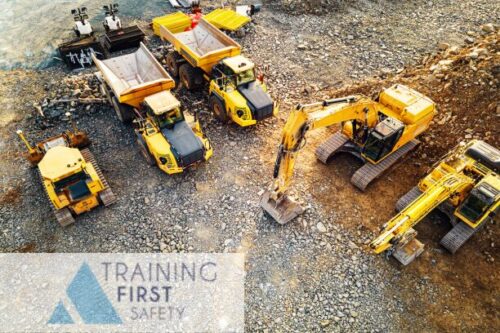-
 NRSWA Supervisor Re-Assessment Training (New Roads and Street Works) is a necessity for any employee who have previously completed the NRSWA Supervisor course. Delegates who wish to undertake this training MUST provide a scanned copy of their current Street Works card (Front and Back). Students MUST complete their training within 5 years of the card expiry. Failure to adhere to these guidelines will result in the delegate having to sit the full NRSWA Supervisor 5 day course again.
NRSWA Supervisor Re-Assessment Training (New Roads and Street Works) is a necessity for any employee who have previously completed the NRSWA Supervisor course. Delegates who wish to undertake this training MUST provide a scanned copy of their current Street Works card (Front and Back). Students MUST complete their training within 5 years of the card expiry. Failure to adhere to these guidelines will result in the delegate having to sit the full NRSWA Supervisor 5 day course again. -
 Course Aims To learn how to prepare for vehicle movement and guidance, communication, plant hazards and ground condition, work area layout and positioning as part of a work management traffic plan. Course Content • Explain the duties role and responsibilities and any limitations, including the procedures when ca pabilities are exceeded, of those marshalling or guiding the movement of plant and vehicles in a variety of situations. • Outline the hierarchy of control measures for plant and vehicle movement, and the requirements of a work management traffic plan. • Outline the legislative requirements and procedures relating to plant and vehicles accessing or egressing for the public highway, and the effects on other road users. • Explain types, attributes, limitations, hazards, and stability factors on a range of typical plant and work-related vehicles relevant to the occupational area or sector. • Explain the requirements of and types, functionality, advantages and limitations of a range of driv er visibility aids for a range of occupationally relevant plant and vehicles. • Explain how ground conditions and features, proximity hazards and weight limits can affect the operations of plant and vehicles for different access points and work areas. • Explain the important and locations of positions of safety for a marshaller and other personnel. • Describe and use different types of communication methods for receiving and communication ve hicle and plant movements.
Course Aims To learn how to prepare for vehicle movement and guidance, communication, plant hazards and ground condition, work area layout and positioning as part of a work management traffic plan. Course Content • Explain the duties role and responsibilities and any limitations, including the procedures when ca pabilities are exceeded, of those marshalling or guiding the movement of plant and vehicles in a variety of situations. • Outline the hierarchy of control measures for plant and vehicle movement, and the requirements of a work management traffic plan. • Outline the legislative requirements and procedures relating to plant and vehicles accessing or egressing for the public highway, and the effects on other road users. • Explain types, attributes, limitations, hazards, and stability factors on a range of typical plant and work-related vehicles relevant to the occupational area or sector. • Explain the requirements of and types, functionality, advantages and limitations of a range of driv er visibility aids for a range of occupationally relevant plant and vehicles. • Explain how ground conditions and features, proximity hazards and weight limits can affect the operations of plant and vehicles for different access points and work areas. • Explain the important and locations of positions of safety for a marshaller and other personnel. • Describe and use different types of communication methods for receiving and communication ve hicle and plant movements. -
 Course Aims To learn how to prepare for vehicle movement and guidance, communication, plant hazards and ground condition, work area layout and positioning as part of a work management traffic plan. Course Content • Explain the duties role and responsibilities and any limitations, including the procedures when ca pabilities are exceeded, of those marshalling or guiding the movement of plant and vehicles in a variety of situations. • Outline the hierarchy of control measures for plant and vehicle movement, and the requirements of a work management traffic plan. • Outline the legislative requirements and procedures relating to plant and vehicles accessing or egressing for the public highway, and the effects on other road users. • Explain types, attributes, limitations, hazards, and stability factors on a range of typical plant and work-related vehicles relevant to the occupational area or sector. • Explain the requirements of and types, functionality, advantages and limitations of a range of driv er visibility aids for a range of occupationally relevant plant and vehicles. • Explain how ground conditions and features, proximity hazards and weight limits can affect the operations of plant and vehicles for different access points and work areas. • Explain the important and locations of positions of safety for a marshaller and other personnel. • Describe and use different types of communication methods for receiving and communication ve hicle and plant movements.
Course Aims To learn how to prepare for vehicle movement and guidance, communication, plant hazards and ground condition, work area layout and positioning as part of a work management traffic plan. Course Content • Explain the duties role and responsibilities and any limitations, including the procedures when ca pabilities are exceeded, of those marshalling or guiding the movement of plant and vehicles in a variety of situations. • Outline the hierarchy of control measures for plant and vehicle movement, and the requirements of a work management traffic plan. • Outline the legislative requirements and procedures relating to plant and vehicles accessing or egressing for the public highway, and the effects on other road users. • Explain types, attributes, limitations, hazards, and stability factors on a range of typical plant and work-related vehicles relevant to the occupational area or sector. • Explain the requirements of and types, functionality, advantages and limitations of a range of driv er visibility aids for a range of occupationally relevant plant and vehicles. • Explain how ground conditions and features, proximity hazards and weight limits can affect the operations of plant and vehicles for different access points and work areas. • Explain the important and locations of positions of safety for a marshaller and other personnel. • Describe and use different types of communication methods for receiving and communication ve hicle and plant movements. -

Pre-course Requirements
Delegates must have passed the appropriate HS&E test within the last two years prior to attending this courseCourse Overview
The Ride on Roller course is delivered through a combination of classroom-based learning and practical training.Course Structure
- All pre-start, running checks and shut down procedures
- Set roller for travel
- Awareness of on-site hazards
- Set the roller for compaction duties
- Place roller in an out of service condition
- Recognise compacted/uncompacted areas
- Conditions that may cause instability of the roller
- Safety procedures when working up to unsupported edges
- Loading and unloading procedures on/off a transporter
-

Pre-course Requirements
Delegates must have passed the appropriate HS&E test within the last two years prior to attending this courseCourse Overview
The Ride on Roller course is delivered through a combination of classroom-based learning and practical training.Course Structure
- All pre-start, running checks and shut down procedures
- Set roller for travel
- Awareness of on-site hazards
- Set the roller for compaction duties
- Place roller in an out of service condition
- Recognise compacted/uncompacted areas
- Conditions that may cause instability of the roller
- Safety procedures when working up to unsupported edges
- Loading and unloading procedures on/off a transporter
-

Course Objective:
The objective of this course is to provide delegates with the knowledge and skills that will enable them to safely and competently operate Ride on Rollers on site in line with NPORS guidelines. The NPORS National Plant Operators Registration Scheme is now one of the UK’s leading CSCS affiliated carding schemes and is accepted across the Construction, Industrial, Utilities, Warehousing and Port and Marine sectors to name a few.
Course Delivery
This course will consist of a large element of practical tuition. Any delegates undertaking a novice N214 Road Roller course will also undertake theory training to prepare them for the multiple-choice assessment. All delegates are provided with and are encouraged to read Nationwide Training Provider’s NPORS study notes.
-

Course Objective:
The objective of this course is to provide delegates with the knowledge and skills that will enable them to safely and competently operate Ride on Rollers on site in line with NPORS guidelines. The NPORS National Plant Operators Registration Scheme is now one of the UK’s leading CSCS affiliated carding schemes and is accepted across the Construction, Industrial, Utilities, Warehousing and Port and Marine sectors to name a few.
Course Delivery
This course will consist of a large element of practical tuition. Any delegates undertaking a novice N214 Road Roller course will also undertake theory training to prepare them for the multiple-choice assessment. All delegates are provided with and are encouraged to read Nationwide Training Provider’s NPORS study notes.
-
 Course Aims To learn how to prepare for vehicle movement and guidance, communication, plant hazards and ground condition, work area layout and positioning as part of a work management traffic plan. Course Content • Explain the duties role and responsibilities and any limitations, including the procedures when ca pabilities are exceeded, of those marshalling or guiding the movement of plant and vehicles in a variety of situations. • Outline the hierarchy of control measures for plant and vehicle movement, and the requirements of a work management traffic plan. • Outline the legislative requirements and procedures relating to plant and vehicles accessing or egressing for the public highway, and the effects on other road users. • Explain types, attributes, limitations, hazards, and stability factors on a range of typical plant and work-related vehicles relevant to the occupational area or sector. • Explain the requirements of and types, functionality, advantages and limitations of a range of driv er visibility aids for a range of occupationally relevant plant and vehicles. • Explain how ground conditions and features, proximity hazards and weight limits can affect the operations of plant and vehicles for different access points and work areas. • Explain the important and locations of positions of safety for a marshaller and other personnel. • Describe and use different types of communication methods for receiving and communication ve hicle and plant movements.
Course Aims To learn how to prepare for vehicle movement and guidance, communication, plant hazards and ground condition, work area layout and positioning as part of a work management traffic plan. Course Content • Explain the duties role and responsibilities and any limitations, including the procedures when ca pabilities are exceeded, of those marshalling or guiding the movement of plant and vehicles in a variety of situations. • Outline the hierarchy of control measures for plant and vehicle movement, and the requirements of a work management traffic plan. • Outline the legislative requirements and procedures relating to plant and vehicles accessing or egressing for the public highway, and the effects on other road users. • Explain types, attributes, limitations, hazards, and stability factors on a range of typical plant and work-related vehicles relevant to the occupational area or sector. • Explain the requirements of and types, functionality, advantages and limitations of a range of driv er visibility aids for a range of occupationally relevant plant and vehicles. • Explain how ground conditions and features, proximity hazards and weight limits can affect the operations of plant and vehicles for different access points and work areas. • Explain the important and locations of positions of safety for a marshaller and other personnel. • Describe and use different types of communication methods for receiving and communication ve hicle and plant movements. -
 Course Aims To learn how to prepare for vehicle movement and guidance, communication, plant hazards and ground condition, work area layout and positioning as part of a work management traffic plan. Course Content • Explain the duties role and responsibilities and any limitations, including the procedures when ca pabilities are exceeded, of those marshalling or guiding the movement of plant and vehicles in a variety of situations. • Outline the hierarchy of control measures for plant and vehicle movement, and the requirements of a work management traffic plan. • Outline the legislative requirements and procedures relating to plant and vehicles accessing or egressing for the public highway, and the effects on other road users. • Explain types, attributes, limitations, hazards, and stability factors on a range of typical plant and work-related vehicles relevant to the occupational area or sector. • Explain the requirements of and types, functionality, advantages and limitations of a range of driv er visibility aids for a range of occupationally relevant plant and vehicles. • Explain how ground conditions and features, proximity hazards and weight limits can affect the operations of plant and vehicles for different access points and work areas. • Explain the important and locations of positions of safety for a marshaller and other personnel. • Describe and use different types of communication methods for receiving and communication ve hicle and plant movements.
Course Aims To learn how to prepare for vehicle movement and guidance, communication, plant hazards and ground condition, work area layout and positioning as part of a work management traffic plan. Course Content • Explain the duties role and responsibilities and any limitations, including the procedures when ca pabilities are exceeded, of those marshalling or guiding the movement of plant and vehicles in a variety of situations. • Outline the hierarchy of control measures for plant and vehicle movement, and the requirements of a work management traffic plan. • Outline the legislative requirements and procedures relating to plant and vehicles accessing or egressing for the public highway, and the effects on other road users. • Explain types, attributes, limitations, hazards, and stability factors on a range of typical plant and work-related vehicles relevant to the occupational area or sector. • Explain the requirements of and types, functionality, advantages and limitations of a range of driv er visibility aids for a range of occupationally relevant plant and vehicles. • Explain how ground conditions and features, proximity hazards and weight limits can affect the operations of plant and vehicles for different access points and work areas. • Explain the important and locations of positions of safety for a marshaller and other personnel. • Describe and use different types of communication methods for receiving and communication ve hicle and plant movements. -
 It’s a mandatory requirement under PUWER 1998 that all users must be competent and all users must be trained to ensure they have the knowledge, understanding and skills required to use tools safely at work.
It’s a mandatory requirement under PUWER 1998 that all users must be competent and all users must be trained to ensure they have the knowledge, understanding and skills required to use tools safely at work.Course objectives/outcomes:
- H&S Laws and Regulations · understanding your legal duty – PUWER (Provision and Use of Work Equipment Regulations) 1998 and Health & Safety at Work Act 1974
- Responsibilities of employer and employee
- Hazards & Risks involved · hand arm vibration, dust and respiratory hazards
- Noise action levels, lower and upper daily exposure levels
- Wheel markings · what they mean – what you need to know
- How to carry out pre-use checks and inspections of equipment and working area
- Importance of issuing task and product specific PPE with examples
- Bench Grinders, Petrol Cut Off Saw, 110V and battery handheld can be covered if requested when booking
- Test paper/ questions/ handouts and review
-

NPORS- Health and Safety Awareness
Overview This course highlights potential hazards when working on site and provides practical advice on keeping yourself and your colleagues safe. It covers your individual and employer’s responsibilities, including what you can do if you think anyone’s health and safety is being put at risk. At the end of the course you will have an understanding of:- the need to prevent accidents
- health and safety law
- how your role fits into the control and management of the site risk assessments and method statements
- performing safely and asking for advice
- how to report unsafe acts to prevent an accident
